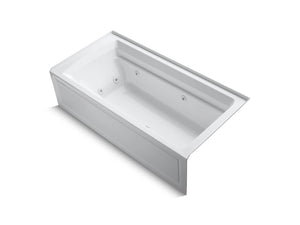Essential Guide To Right Bathtub Drain Installation And Maintenance
Understanding Bathtub Drains: A Comprehensive Guide
When it comes to bathroom renovation or maintenance, one component often overlooked is the bathtub drain. A well-functioning drain is essential for ensuring a relaxing bath experience. In this article, we will explore everything you need to know about bathtub drains, including types, installation, maintenance tips, and common issues.
Types of Bathtub Drains
Pop-Up Drains
Pop-up drains are popular for bathtubs due to their convenient design. They include a lever or knob that can be used to open and close the drain. This functionality allows users to easily fill or empty the tub.
Toe-Tap Drains
The toe-tap drain is another common type, activated by pushing the stopper with your foot. This design is user-friendly, especially for those who may have difficulty bending down.
Lift-and-Turn Drains
A lift-and-turn drain requires the user to lift the knob and turn it to open or close the drain. This type of drain is also easy to use but may require more maintenance to ensure the mechanism operates smoothly.
How to Install a Bathtub Drain
Installing a bathtub drain may seem daunting, but with the right tools and knowledge, it can be a straightforward task.
Necessary Tools and Materials
- Pipe wrench
- Plumber's putty
- New bathtub drain assembly
- Screwdriver
- Pliers
Installation Steps
- Remove the old drain by unscrewing it from the tub.
- Clean the threads around the drain hole to ensure a good seal.
- Apply plumber's putty around the new drain assembly's base.
- Insert the new drain into the hole and tighten it using a pipe wrench.
- Connect the overflow drain, if applicable, by following the manufacturer's instructions.
Maintaining Your Bathtub Drain
Regular maintenance will prolong the life of your bathtub drain and prevent clogs. Here are some tips to keep your drain functioning properly:
Routine Cleaning
Cleaning your bathtub drain regularly can help prevent hair and soap buildup that leads to clogs. Consider using a drain snake or a mixture of baking soda and vinegar for natural cleaning.
Monitor for Leaks
Keep an eye out for leaks around the drain area. Address any leaks promptly to avoid water damage to your bathroom.
Professional Inspection
If you notice persistent drainage issues or slow water flow, it may be time to call a professional plumber. A thorough inspection can help identify underlying issues that require immediate attention.
Common Bathtub Drain Problems
Slow Drainage
Slow drainage is a common issue that often results from clogs. Regular cleaning and maintenance can usually prevent this. If the problem persists, you may need to clear the pipes.
Clogs
Clogs can occur from hair, soap, and other debris accumulating in the drain. Using a drain snake or chemical drain cleaner can help, but frequent clogs may indicate a more serious problem in the plumbing system.
Bad Odors
Bad odors emanating from your bathtub drain could indicate a buildup of organic matter. Ensure you clean the drain regularly to prevent odors and maintain a fresh bathroom environment.
Conclusion
A bathtub drain is a critical part of your bathroom’s plumbing system. Understanding the types of drains available, installation processes, maintenance, and potential problems can enhance your bathing experience. For further assistance with your bathtub drain or to resolve any issues, don’t hesitate to contact a plumbing professional for expertise.




















